GFC Platform Camper Is the Ultimate Overlanding Upgrade for Off-Road Aficionados
About three-quarters of the way up a narrow, rock-strewn road, I realized there was a sound missing from our ascent toward an alpine lake in the Montana wilderness. I'm in a 2021 Ford Ranger outfitted with Go Fast Camper’s Platform Camper. Amid bouncing and scraping and white-knuckling some tight turns at the edge of stomach-dropping descents, there's a cacophony of engine growls, rock dings, and tire groans. But there wasn't so much as a squeak or a rattle from the camper top.
Normally, overlanding gear attached to the outside of your rig, pickup, or SUV, is impossible to ignore, as every bump along the road elicits a sound. But GFC’s Platform Camper—a pickup bed topper and rooftop tent rolled into one—is silent, solid, and crafted with precision.
It's made to fit most models of modern pickups across the mainstream brands. But the Platform Camper and Platform Topper, the base of the Camper system, can be custom designed by way of laser scanner to fit the beds of vintage or odd trucks—anything from an ’80s Volkswagen Pickup to the new Ford Maverick. You just have to get it to brand HQ in Bozeman, MT. The best part is everything—including the separate Platform RTT—are made and assembled in Bozeman.
Related: The Best Sport Watches for Every Type of Adventure
GFC Platform Camper Specs
Camper Structure: 6061 T-6 aluminum
Panels: 5052 aluminum; available in black, gray, green, blue, red, white, metallic gray, metallic bronze, and metallic silver
Bed Mounts: Billet 6061 T-6 aluminum, 3/8" socket head cap screws
Tent Fabric: 300D ripstop fabric
Tent Roof: Composite honeycomb panel
Mattress: 3-inch-thick dual-density open-cell foam, 4-way stretch top cover, 600D Cordura bottom cover
Mattress Dimensions: STD (midsize trucks) 90" x 50", XL (full-size trucks) 90" x 56"
Dynamic Roof Load: 500 pounds (when using GFC Beef Rack crossbars)
Weight: 275 pounds (dependent on truck bed size)
The GFC Experience—Live in Montana

Adam Bible
I toured GFC's facilities outside of Bozeman last year with GFC founder and CEO Graeme MacPherson. What seemed to be an unassuming group of metal warehouses was actually mini factories and assembly stations. Since its founding in 2017, GFC has worked hard on ways to keep manufacturing and tooling inside the company—mainly to limit the cost and time suck that sourcing parts overseas can bring. This also allows the team to react to failures and make tweaks to the small and large components that comprise each product.
For example, in 2018, just as GFC was getting rolling, concerns arose about a hinge problem that could cause the side panels to completely fail.
"Once the issue was discovered, we rapidly came out with a temporary fix, and a long-term solution that tied a completely new design into existing campers," MacPherson says. "We then drove around the country updating every customer's hinges for about 1,000 early units."
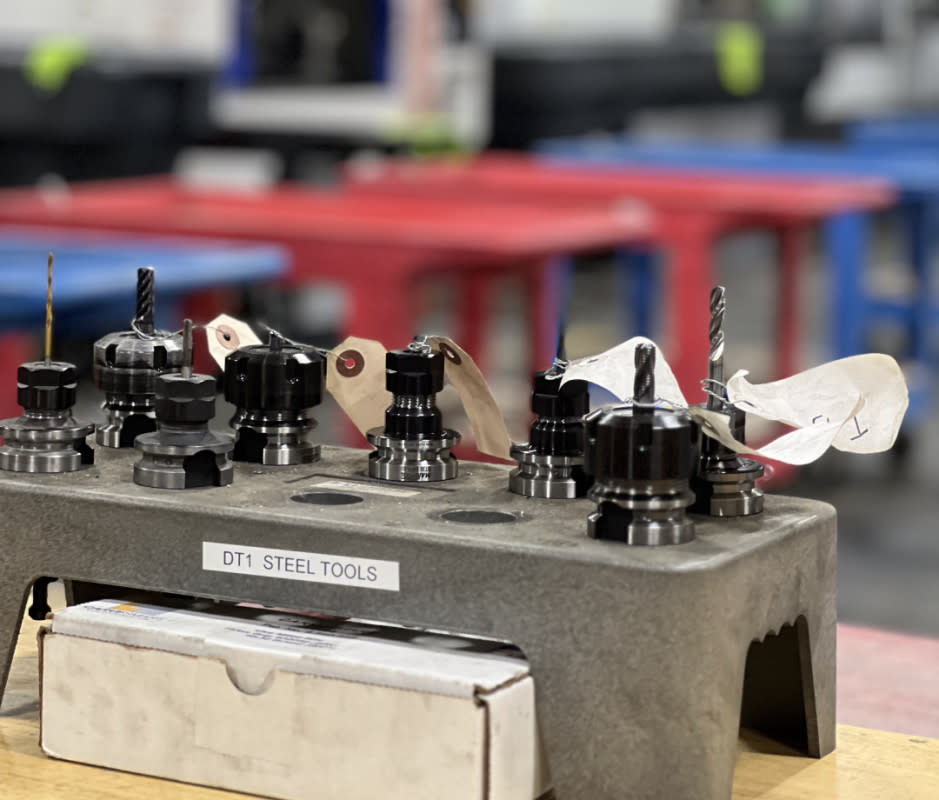
Adam Bible
GFC now does nearly all of its production of parts in-house or sources from companies made in the U.S., with few exceptions.
“The third brake light and panel latches on the doors are the only internationally sourced components, simply because we haven’t found a good domestic supplier,” says MacPherson. “We're always on the lookout for U.S.-made products that meet our needs for strength, weight, and performance. Every other material is sourced in the United States—all the billet components are machined in-house from American aluminum, and everything is assembled and sewn right here in southwest Montana.”
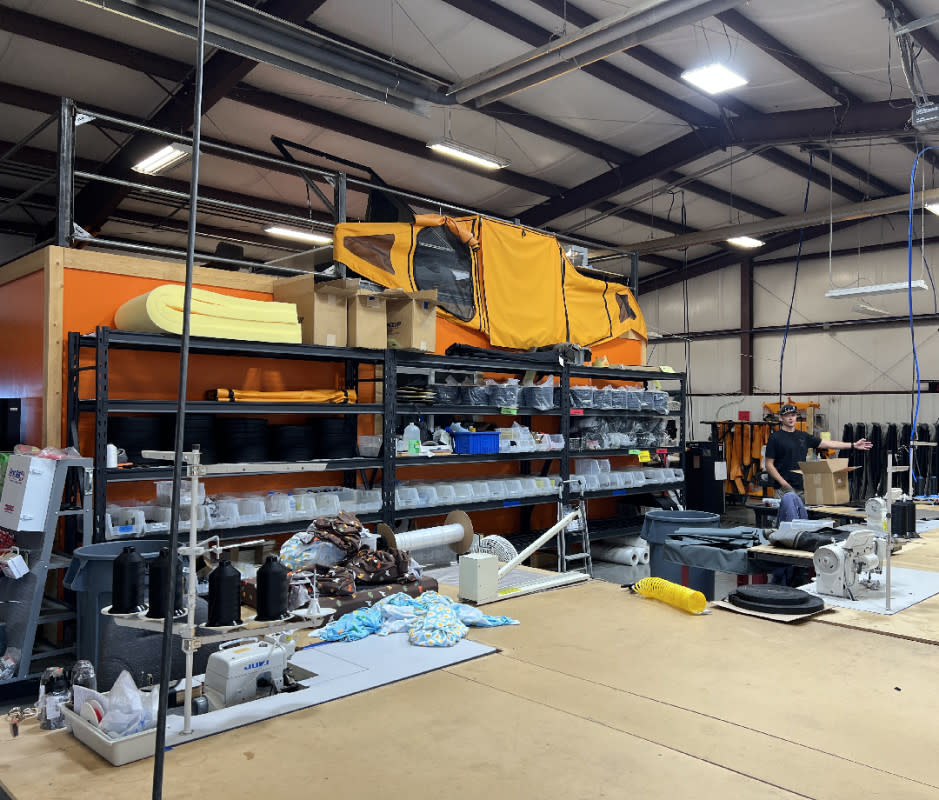
Adam Bible
“A big part of what makes the GFC Platform Camper so strong and light is that each is custom sized to the exact dimensions for each year, make, model, and trim of pickup truck we support,” he says. “This runs counter to general camper industry practice, which sees campers sized generically for bed lengths only, and enables our proprietary aluminum space frame to structurally brace the bed of any truck it’s mounted to, enhancing performance and durability off-road, while taking advantage of all the space available inside a truck’s bed.”
Related: The Best Bourbons of 2024 to Drink Neat or as a Highball
How We Tested GFC's Platform Camper
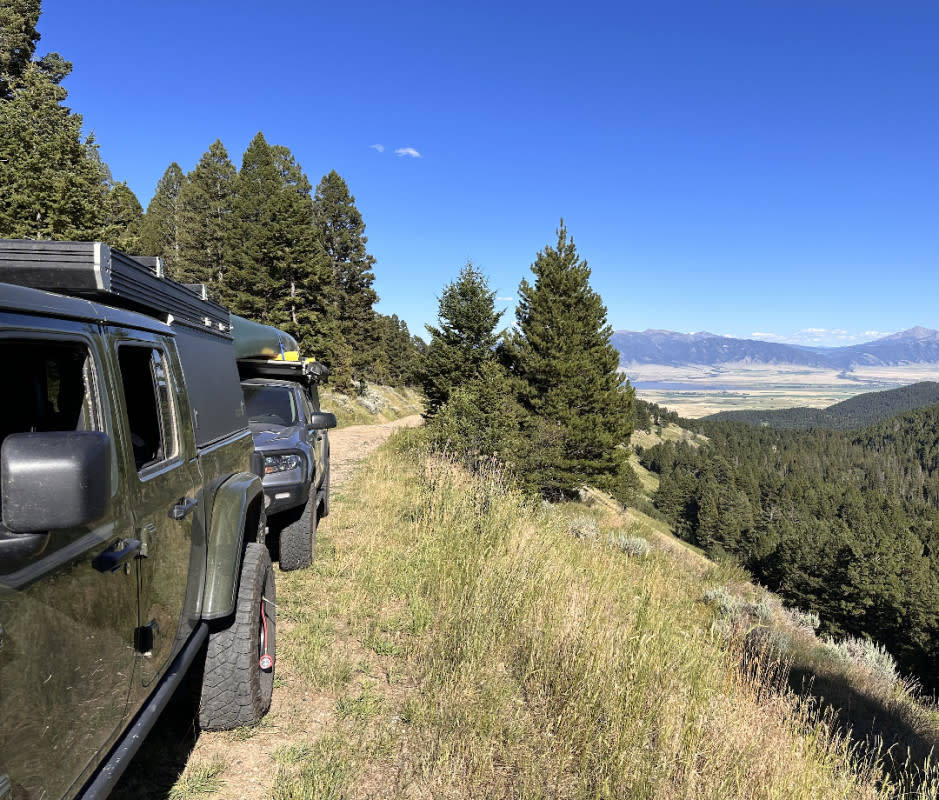
Nicholas Pchelka
To put the GFC Camper to the test, I embarked on a quick, one-night jaunt to Beaverhead Deer Lodge National Forest in the Montana mountains with writer and outdoor raconteur Wes Siler and his dogs; a friend of his passing through town, who borrowed a 2020 Jeep Gladiator, also outfitted with a Platform Camper; and a neighbor with a 2023 Ford Ranger, who had his own GFC kit mounted in the bed.
We loaded a bunch of gear in the back of each, including a few .357 Smith & Wessons for bear protection, and a canoe. Siler unceremoniously tossed his dogs a pack each of Costco raw chicken legs to sate them for the hurried expedition.
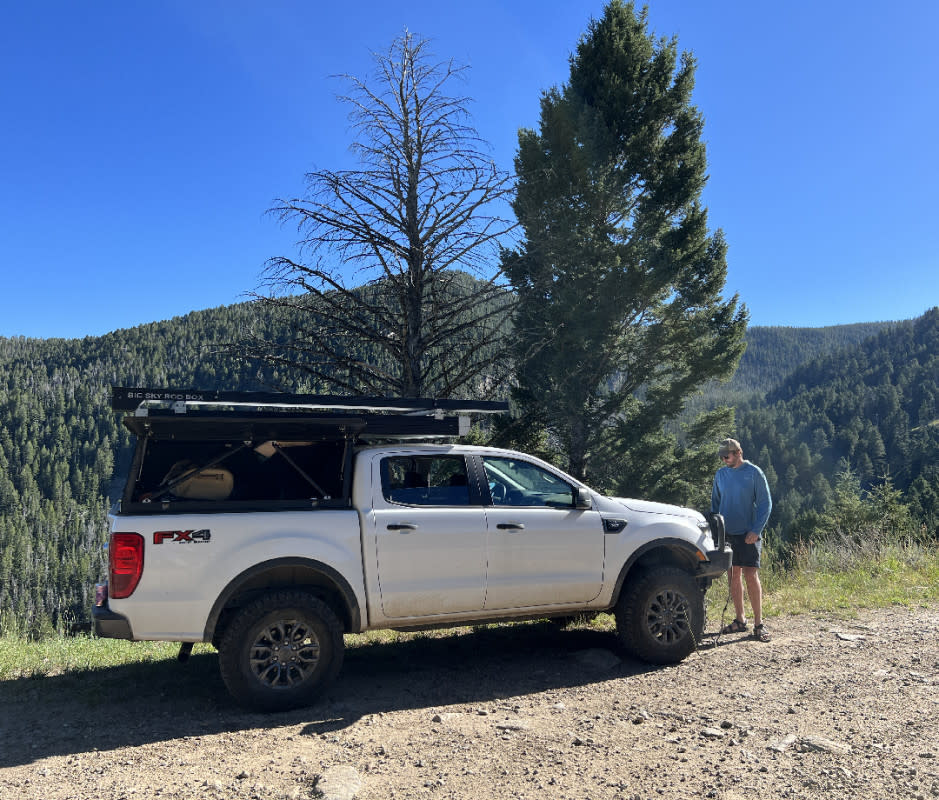
Adam Bible
We traversed the rolling Montana countryside, bordered by distant mountain ranges that broke the brilliant blue expanse of the sky. Once we hit our dirt road turnoff, we started the climb through the Tobacco Root Mountains. Bumping up the road into the hills was my first confirmation of how solidly built the GFC platform is. The Camper is made of 888 parts, which means just as many wear points that can creak on corduroy roads.
And yet, despite the engines growling and tires crunching over rocks, the only sound we heard was the static of the slowly fading classic rock station on the radio—plus the occasional outburst from the dogs as they jockeyed over access to the cracked windows.
No squeals, no rattles, no annoyances. (For an anecdotal counterpoint, Thule's Foothill RTT mounted to a Prinsu rack on my FJ Cruiser squeaks like a bucket of trapped mice, even on minor asphalt undulations.)
Eventually we veered off onto a narrower road that led up a steeper incline and the real off-roading began. With a steadily increasing sequence of small boulders strewn about the trail, it was time to air down.
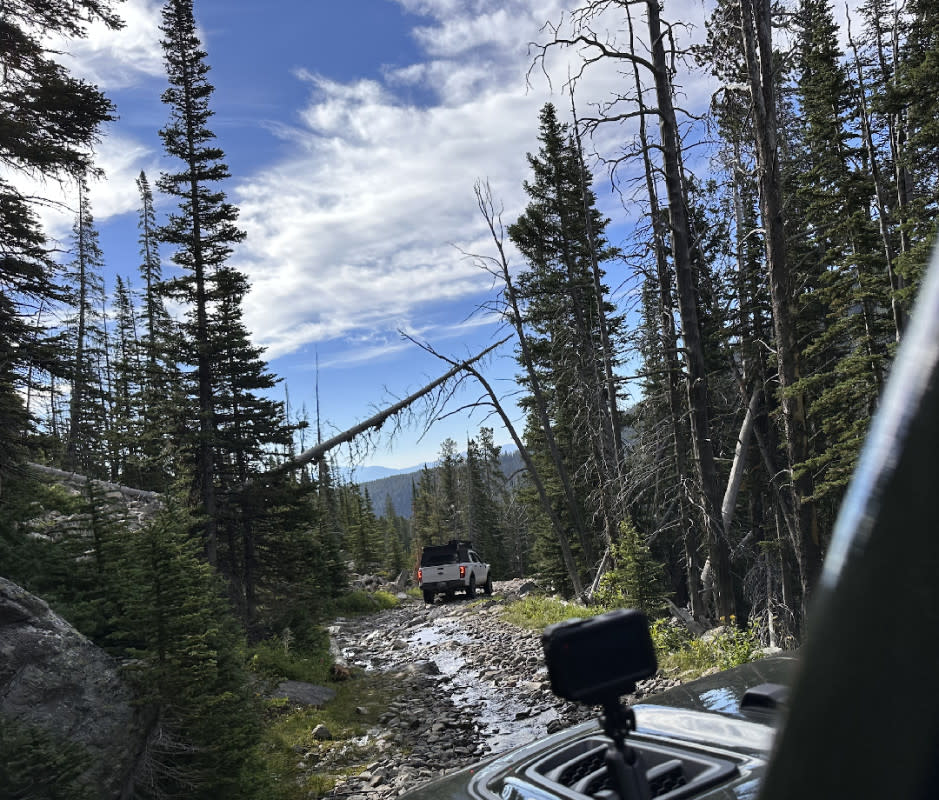
Nicholas Pchelka
As the trail got steeper and narrower, the boulders got bigger, and their placement more hazardous. All the vehicles chugged along as we picked the path of least resistant—my palms sweaty while piloting Siler’s truck. I tried to keep the bangs and scrapes on the undercarriage to a minimum, acutely aware of his tolerance level when a particularly egregious love tap on a skid plate elicited a “Jesus!” under his breath.
It's a solid reminder why it's paramount to up-fit a 4x4 with protection from rocks. We crested out at South Meadow Lake in late afternoon.
Related: The Best Side-by-Side UTVs of 2024
Setting Up and Camping With GFC
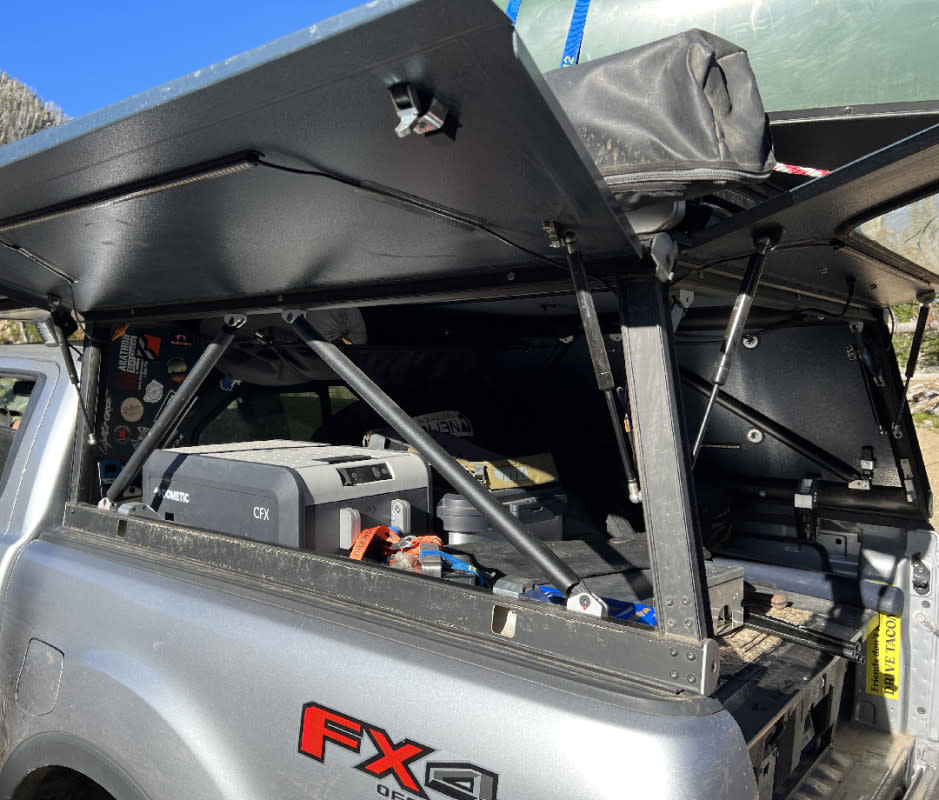
Adam Bible
After struggling a bit to perch the trucks on rocks to level them out, Siler let the hounds loose, then proceeded to show me the genius of the GFC system. For roof-top tent (RTT) newbies, leveling your truck before setting up is key as any deviation from a flat plane can be annoying at least and maddening at worst, when trying to snooze on top of the vehicle.
Two thumbs pop the flush, lockable latches on each aluminum side panel to open up the bed and make it easily accessible. This reveals the frame that holds the panels on and supports the RTT, with triangulated aluminum bracing on each side and billet aluminum bed mounts. The extensive use of aluminum is what makes the Platform Camper so durable, but also allows it to weigh less than any other full rooftop clamshell camper.
To deploy the tent, flip the latches on the left and right side of the RTT, then give it a gentle push with a palm. The gas strut-aided tent top slowly glides up. A few quick zips of the side panels on the tent tightens everything up. The tent is made from 300D honeycomb ripstop (in Tangerine or Stone Grey) and is waterproof. Vulnerable seams are heat welded to seal out the elements, and there are zippered exterior rain doors.
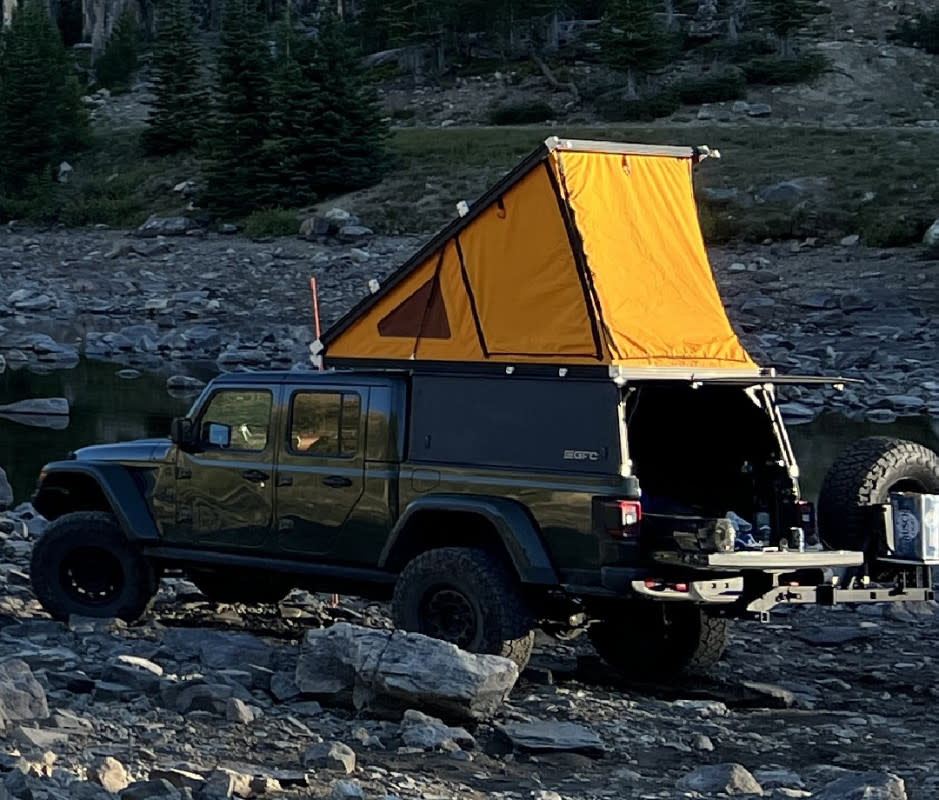
Adam Bible
Two small, triangular zippered windows near the leading edge of the wedge-shaped RTT can be opened to boost ventilation by creating crossflow. And, thankfully, for anyone who's camped on or near the beach in the summer, all of the mesh has been upgraded to no-see-um-rated weaves to spare you a night of horror. I've endured two sweltering, sleepless nights on the Outer Banks in an inferior RTT that did not have no-see-um rated mesh and I'm still mentally scarred.
The best part about having the GFC Camper system is you can crouch and scoot into the bed of your truck, then push out a panel on the bottom of the tent so you can stand up fully. Then, you can use the other side of the attached platform as a seat for changing or even setting up a workstation. (There's also an optional ladder to climb in from the side if your truck bed is constantly full of gear, or you're using just the Platform RTT with an SUV.)
The comfortable open-cell foam mattress can be moved about to suit your desired setup. The newest version is called TurboNap and is a plush three inches thick, but still lets you store bedding in the RTT when you close it up.
After setting up and pulling down the canoe, a few of us set about getting our lines wet, which is all that happened as no fish were biting what we were offering. As the sun started to set, we whipped up some sizzling fajitas off the tailgate of Siler's Ranger, cracked local brews, and shot the shit.

Adam Bible
We built a fire with the abundance of driftwood scattering the rocky beach and shared stories. When the fire died and folks drifted away, I hopped up on the tailgate of the truck, scurried over to the pickup bed, and settled into my cozy chamber for the night. I slid the mattress back over the hole, stashed my phone into a handy side pocket, and zipped into my sleeping bag. It was a comfortable, spacious and, most important of all, level night of snoozing in the chilly Montana mountains.
Final Verdict
With GFC's Platform Camper, there's no need to deal with flimsy one-size-fits-all truck toppers made of thin aluminum or weak fiberglass that let rain and wind in no matter how much you try to plug holes or tighten bolts. And no more getting frustrated with rooftop tents that squeak, rattle, and roil with every off-road movement. The GFC system is one of the most robust, well-built upgrades you can get for your off-roading or overlanding rig. Beware imitators that claim to offer the same quality and are spookily similar in design.
While GFC's system is on the pricey side, you get what you pay for. Plus, GFC is dedicated to making each product incrementally better—with design tweaks and enhancements happening all the time—which are then shared with existing customers to allow them the option to upgrade their product. GFC Platform Camper starts at $3,995 for the Platform Topper, sans RTT, which is $3,999 by itself. The Platform Camper's base price is $8,450 for the whole shebang.
Why You Should Trust Me
I’ve been a gear editor, gear reviewer, and outdoor writer at multiple publications for over 20 years. I'm the gear editor at Men's Journal and I’ve tested and reviewed everything from coolers and grills to e-bikes and flashlights. That includes many rooftop tents, from flimsy knock-offs to expensive, feature-filled RTTs.


